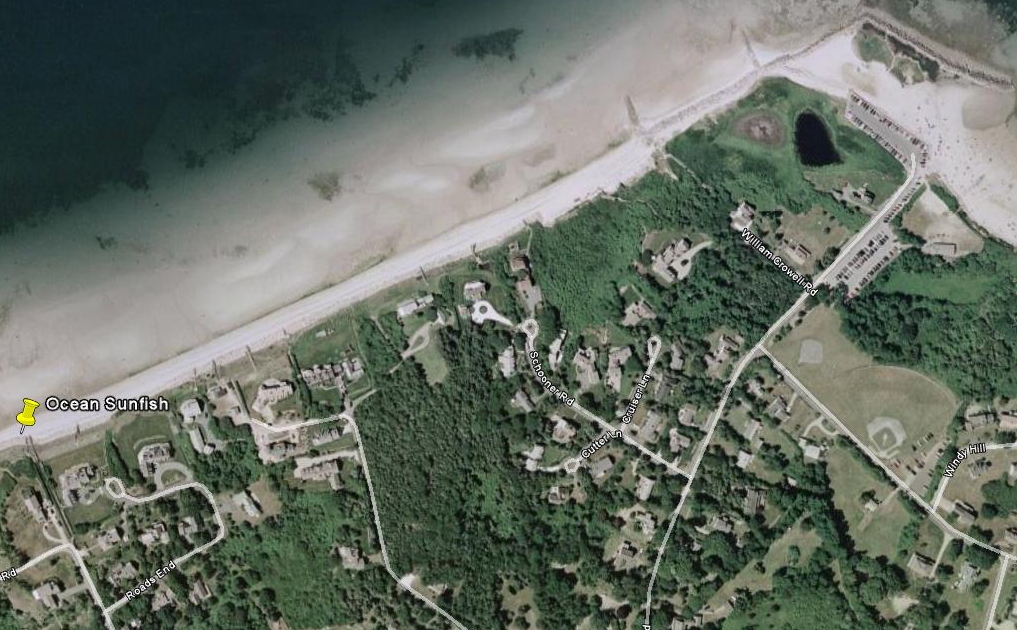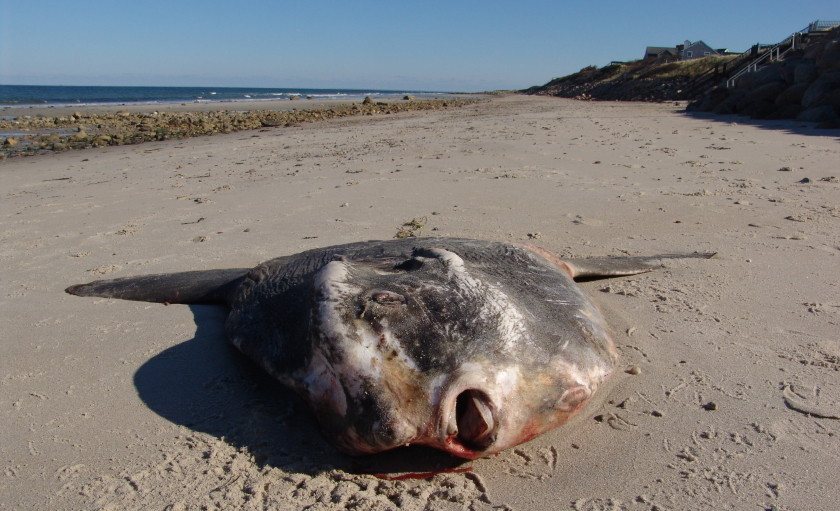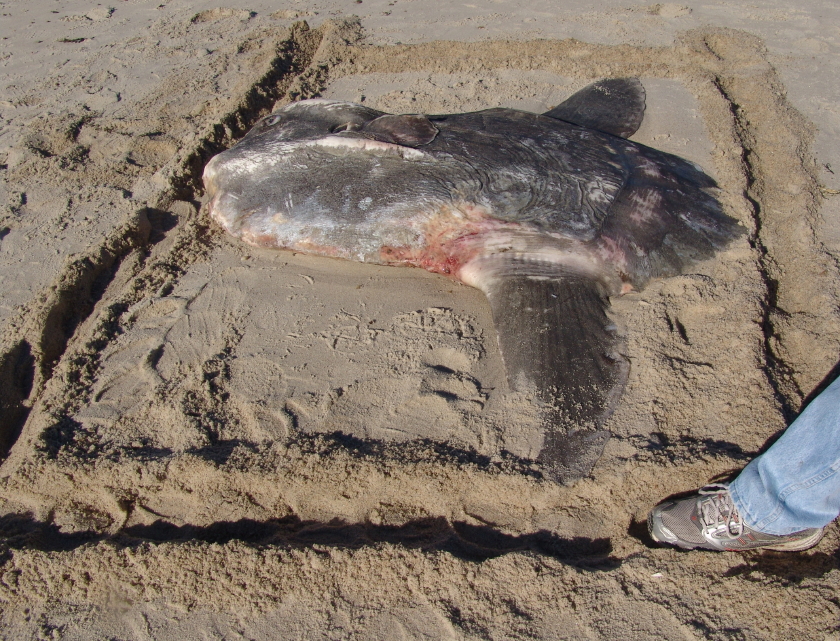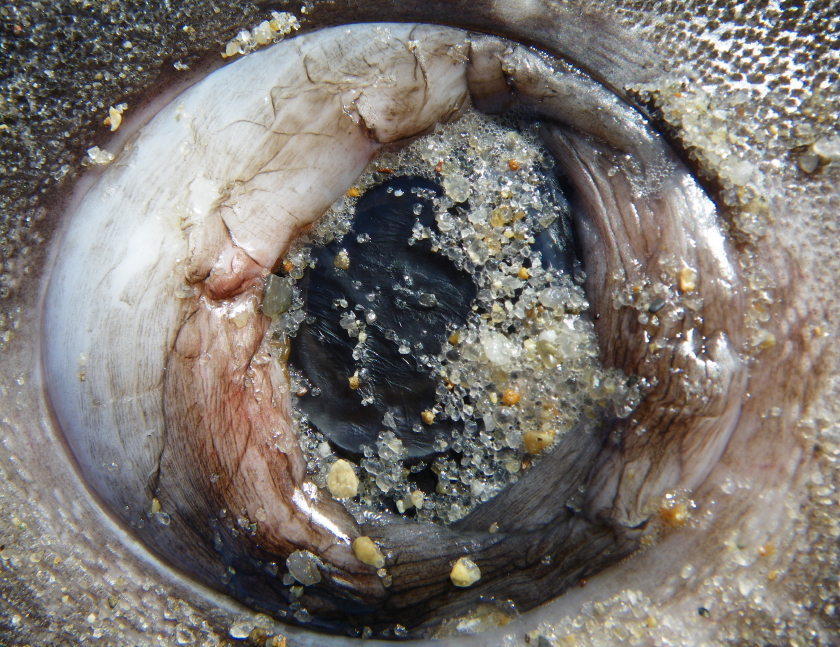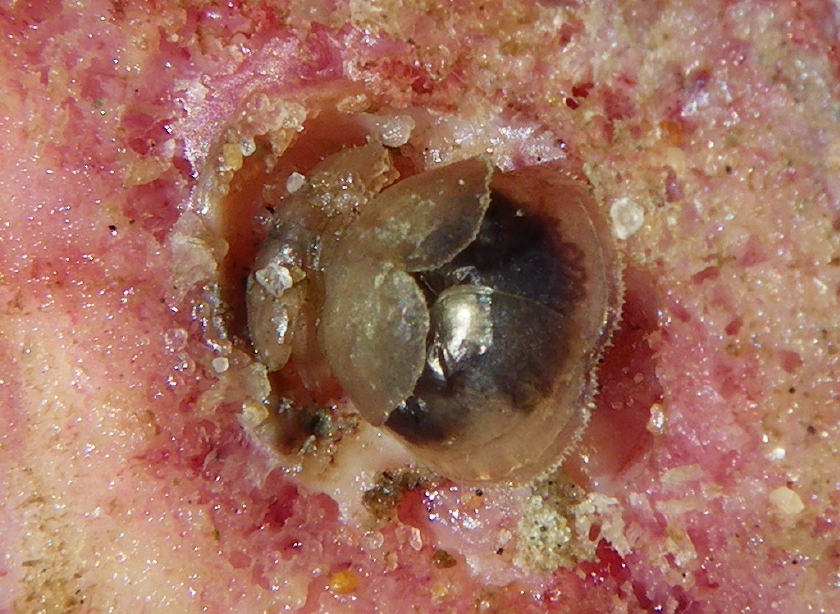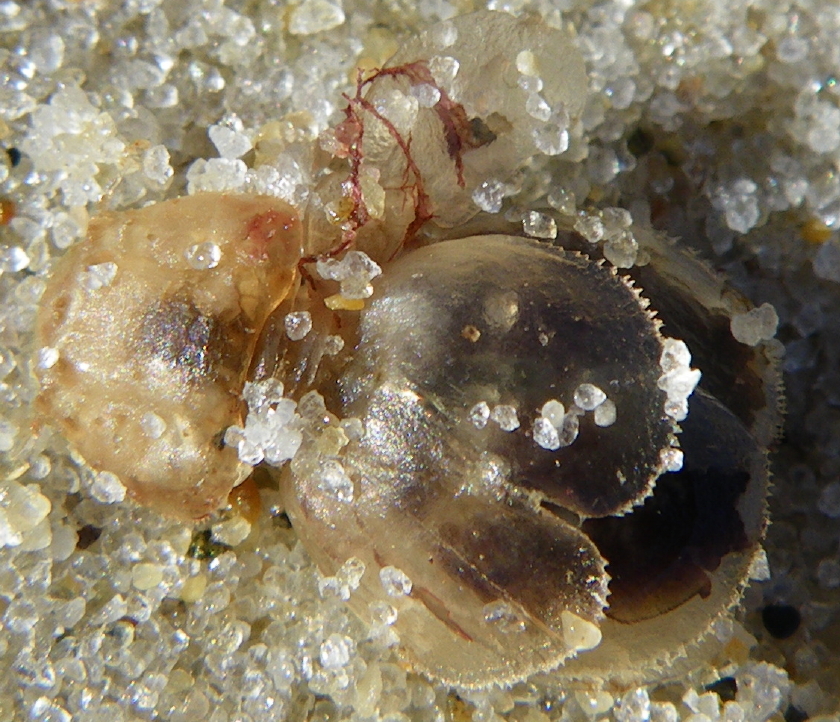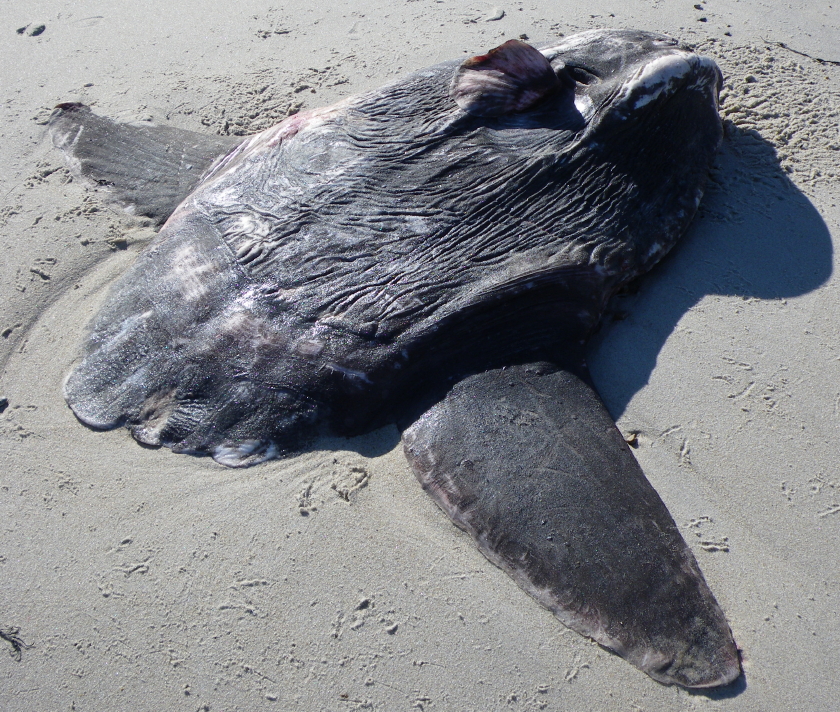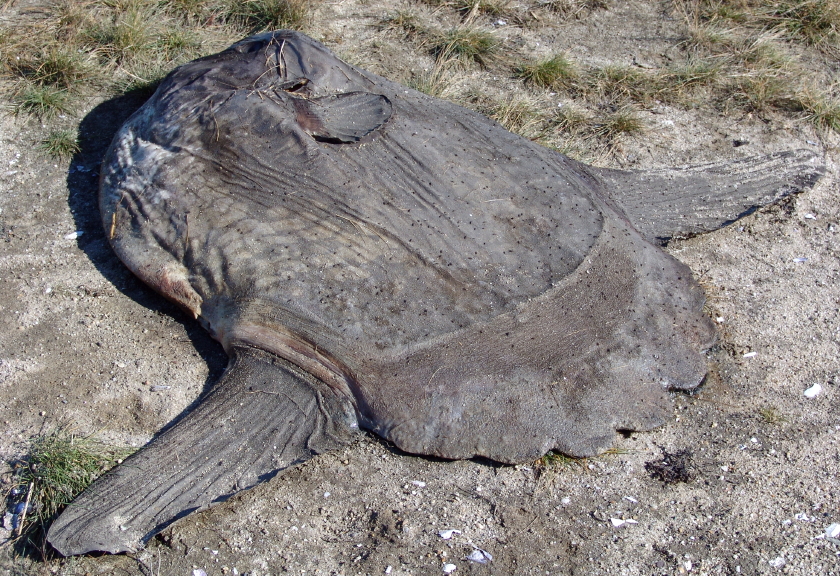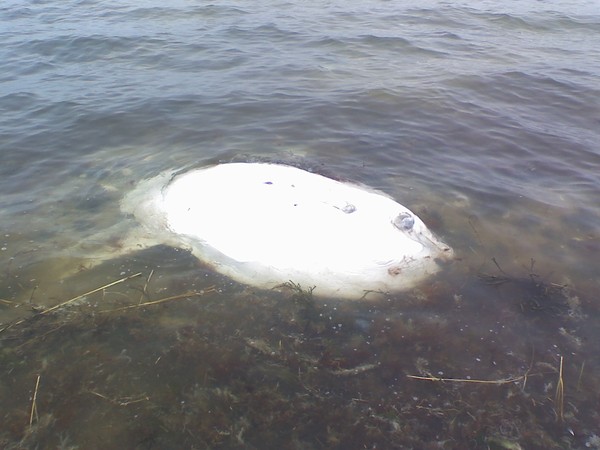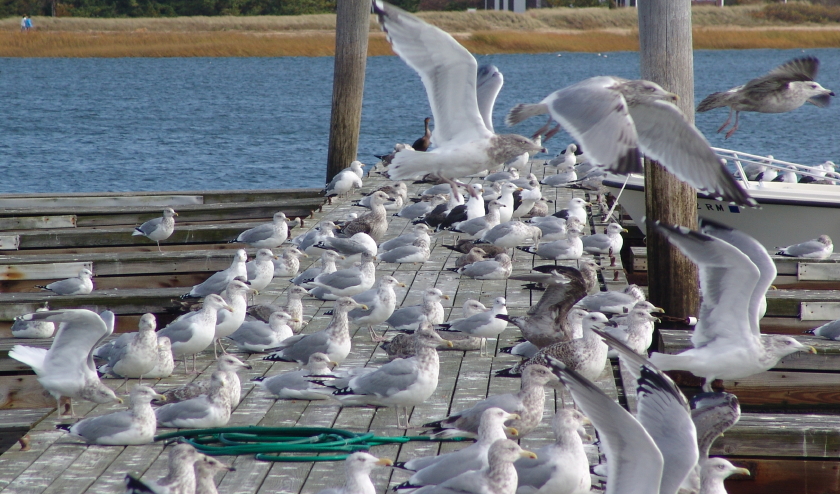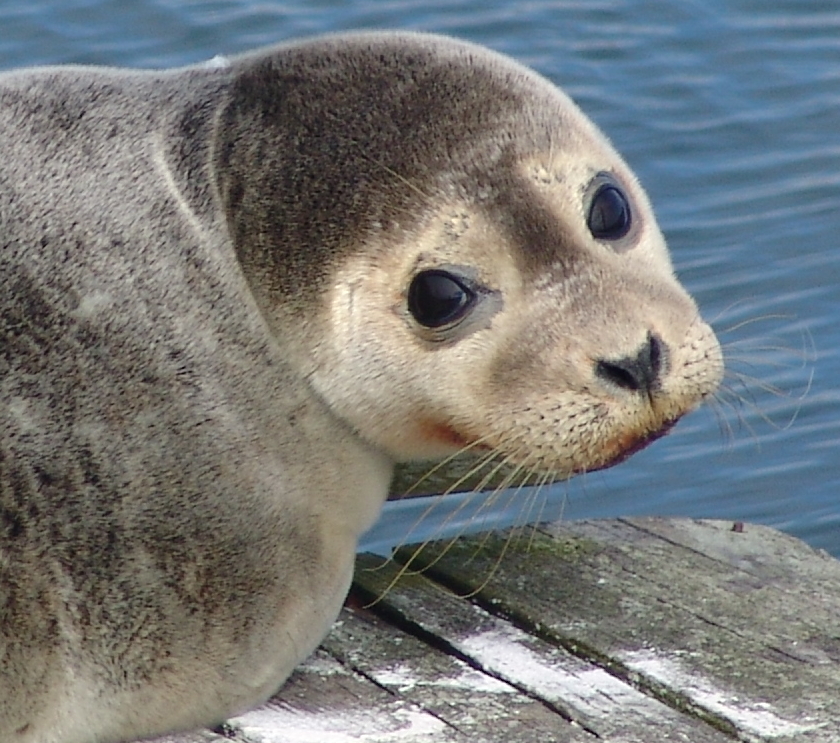Don Lewis Discovers Ocean Sunfish on Dennis Beach
The Turtle Journal Team patrolled Dennis beaches on Saturday morning in search for cold-stunned sea turtles. The first wave of sea turtle strandings has yet to come ashore due to lingering temperate conditions and the lack of a sustained wind event so far this fall. About a quarter mile short of Corporation Beach, Don discovered a large ocean sunfish that had stranded with the early morning high tide.
Location of Dennis Ocean Sunfish
The Dennis ocean sunfish came ashore at 41° 44′ 56.35″ N 070° 11″ 52″ W. Within the last week at least five ocean sunfish have stranded on Cape Cod bayside beaches. None that the Turtle Journal Team has inspected have measured up to the 7-footers that we found last November.
Click Here to View Video in High QualityÂ
Discovery of Ocean Sunfish on Corporation Beach
The video documents the initial discovery of the giant ocean sunfish on Corporation Beach during Saturday morning’s sea turtle patrol.
Stranded Ocean Sunfish (Mola mola)
When it comes to bizarre, nothing in our corner of the universe matches the ocean sunfish (Mola mola). It’s the most massive bony fish in the world. [Yep. That “bony” adjective excludes sharks (cartilaginous) and, of course, the “fish” category cuts out whales and dolphins (mammals) and giant squid (cephalopods) and even our favorite sea serpent: Nessie. Doesn’t seem fair.] Researchers in the Pacific claim that they have documented an ocean sunfish that reached 14 feet (from dorsal fin tip to anal fin tip) and 10 feet long from face to clavus (caudal fin), and hit the scales at near 5000 pounds.
Sue Wieber Nourse Photo-Documents Ocean Sunfish
That’s right: nearly round, flat and awfully heavy … like a millstone and voilà , the Latin word for millstone is “mola.â€Â Yet, un-millstone like, the ocean sunfish swims lithely through the water not flat like a flounder, but upright with its dorsal fin topside and its anal fin beneath. As the sunfish cuts through the ocean, its dorsal fin often prompts shouts of “shark†from nervous observers. Sunfish are also known to bask motionlessly on the surface for thermoregulation (a.k.a., to warm up).
Makeshift Measuring Box for Stranded Mola mola
The sea patrol leg to Corporation Beach stretches two miles long. So unsurprisingly, we ran into the stranded ocean sunfish without our usual data collection kit. Fearing that the incoming 12-foot flood tide would quickly reclaim the Mola mola, we resorted to a makeshift measuring box to obtain gross data. In the sand we drew a rectangle touching the tip to the anal fin, tip of the dorsal fin, tip of the snout and trailing edge of the clavus (rudder) or caudal fin. Luckily, my New Balance sneakers measure exactly one foot from heel to toe, providing a roughly calibrated ruler.
Ocean Sunfish Framed in Makeshift Measuring Box
This Corporation Beach Mola mola measured 5 feet 3 inches long from snout to the trailing edge of caudal fin.  It measured 6 feet 6 inches wide/high from the tip of the dorsal fin to the tip of the anal fin.
Documenting the Ocean Sunfish
Looking at the ocean sunfish from the bottom, we find the snout, the mouth and the left eye to the left side of the photograph. The gills, covered by an operculum, and the pectoral fin are located anterior of the center. The dorsal fin lies at the top right and the anal fin on the bottom center. The clavus (rudder), also called the caudal fin, falls to the right center of the image. A raw redness surrounds the anal opening on the bottom and is dotted with embedded parasites.
Front Quadrant of Ocean Sunfish
The snout lies above the mouth to the left of the picture. The left eye falls in the line between the snout and the pectoral fin, which is bent downward in the image. In front of the pectoral fin are the gills covered by a protective operculum. Dorsal (top) and anal (bottom) fins extend from the body at the far right. The anal opening lies in front of the anal fin on the bottom right.
Close-Up of the Ocean Sunfish Mouth
Note the fused teeth that frame the top and bottom of the Mola mola mouth.
Extreme Close-Up of the Ocean Sunfish Left Eye
The eye lies about midway between the snout and the operculum that covers of the gills in front of the pectoral fin.
Close-Up of Operculum and Pectoral Fin of Ocean Sunfish
About a third of the way back from the snout lies the gills which are covered by a protective operculum. Immediately behind the gills is the pectoral fin.
Extreme Close-Up of the Operculum of an Ocean Sunfish
The protective operculum covers the gills that lie immediately in front of the pectoral fin.
Ocean Sunfish Clavus or Caudal Fin
The truncated tail of the ocean sunfish is called a clavus (rudder) or caudal fin.
Parasite Embedded Near Anal Opening of Ocean Sunfish
A number of parasites were fully embedded around the anal opening, in front of the anal fin, of this ocean sunfish. Some of the parasites had fallen off the animal now dry and baking in direct sunlight.
Extreme Close-Up of Ocean Sunfish Parasite
Along with pictures of the infestation, a specimen has been provided to a local parasitolgist. Analysis of the parasite continues.
Ocean Sunfish on Corporation Beach, Dennis, Cape Cod
The ocean sunfish (Mola mola) is a magnificent marine critter that inspires awe whenever spotted, whether basking in the summer waters of Stellwagen Bank or stranded on a bayside beach in the fall conditions.

